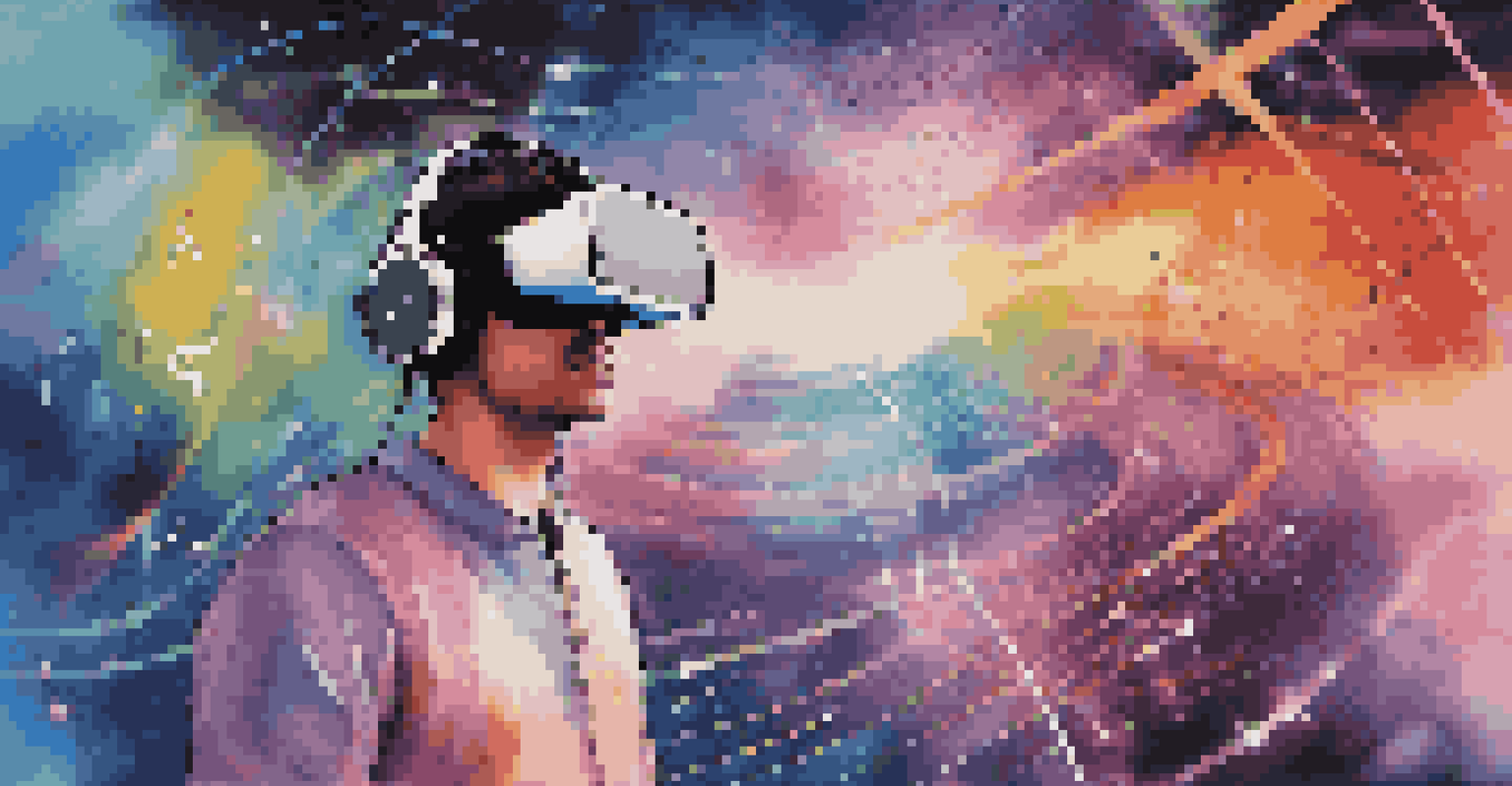The Impact of Sound Design on Video Game Player Engagement

Understanding Sound Design in Video Games
Sound design in video games refers to the creation and manipulation of audio elements that enhance the gaming experience. This includes everything from background music to sound effects that respond to player actions. A well-crafted soundscape immerses players, making them feel like they are part of the game world.
Sound design is the invisible art that creates a world of wonder in video games.
Imagine playing a horror game where the sudden creaking of a door sends chills down your spine. This type of auditory cue not only heightens tension but also keeps players on the edge of their seats. In contrast, a cheerful soundtrack in a platformer can evoke feelings of joy and excitement, drawing players deeper into the experience.
Ultimately, sound design is not just an add-on; it's a core component that shapes how players interact with and perceive the game. When done effectively, it can transform an ordinary game into an unforgettable adventure.
The Role of Music in Player Engagement
Music in video games sets the tone and atmosphere, acting as an emotional guide for players. For example, an epic orchestral score can amplify the stakes during a boss fight, making the encounter feel monumental. This emotional connection can lead to increased player investment and enjoyment.

Consider how iconic themes from games like 'The Legend of Zelda' or 'Final Fantasy' instantly transport players back to their experiences. These memorable melodies create nostalgia, fostering a deeper bond with the game and its characters. Players often find themselves humming these tunes long after they've put the controller down.
Sound Design Enhances Gameplay
Effective sound design immerses players and shapes their interaction and perception of the game.
In essence, music serves as the heartbeat of a game, providing cues that enhance gameplay and storytelling. By carefully choosing and integrating music, game developers can craft a more engaging and memorable experience for players.
Sound Effects: Enhancing Immersion and Interaction
Sound effects play a crucial role in making gameplay feel more realistic and engaging. From the sound of footsteps echoing in a cavern to the satisfying 'thunk' of a successful hit, these audio cues provide feedback that informs players about their actions. This interaction can create a more immersive environment, drawing players deeper into the game world.
Music in games is not just background noise; it's an integral part of the storytelling experience.
For instance, in a racing game, the roar of an engine and the screech of tires can heighten the adrenaline rush of speeding around a track. These sounds not only enhance the realism but also stimulate excitement, encouraging players to push their limits. Without these effects, the gameplay might feel flat and uninspired.
Moreover, sound effects can serve as a form of narrative device, hinting at what’s to come or revealing hidden elements within the game. By carefully crafting these audio elements, developers can guide players through their journey, making every moment feel purposeful and engaging.
The Psychological Impact of Sound on Players
The psychology of sound design reveals how audio can influence player emotions and behavior. Studies show that certain sounds can trigger specific psychological responses, such as increased heart rate or heightened alertness. This knowledge allows developers to strategically use sound to manipulate player experiences.
Take, for example, the use of silence in horror games. A sudden absence of sound can create an unsettling atmosphere, making players feel vulnerable and on edge. This technique keeps players engaged as they anticipate the next auditory shock, often leading to a more involved gameplay experience.
Music Drives Player Engagement
Music sets the emotional tone of a game, fostering nostalgia and deeper connections with players.
By understanding the psychological effects of sound, game developers can craft experiences that resonate with players on a deeper level. This connection not only enhances engagement but also leaves a lasting impression long after the game is over.
Creating a Unique Identity Through Sound Design
Sound design can serve as a signature element that sets a game apart from its competitors. Just like a distinctive visual style or gameplay mechanic, unique audio elements contribute to a game's overall identity. Games like 'Journey' or 'Celeste' are examples where sound design plays a pivotal role in shaping their unique atmospheres.
The ability to create a recognizable sound palette can foster a sense of familiarity among players, drawing them back to the game time and again. For instance, the ‘coin sound’ from Super Mario is instantly recognizable, evoking nostalgia and reinforcing the brand's identity. This recognition can lead to increased player loyalty and engagement.
In a crowded market, sound design becomes a powerful tool for differentiation. By investing in unique audio experiences, developers can cultivate a dedicated fan base and keep players coming back for more.
The Evolution of Sound Design in Gaming
Over the years, sound design in video games has evolved significantly, from simple beeps and boops to complex orchestral scores and realistic soundscapes. Early games relied on basic audio technology, often using synthesized sounds that were limited in range. However, advancements in technology have opened up new possibilities for creativity in sound design.
Today’s games can utilize high-quality recordings and sophisticated software to create immersive audio experiences that adapt to player choices and actions. Dynamic soundscapes that change based on the environment or player interactions can deepen engagement and enhance realism. This evolution allows for richer narratives and more engaging gameplay.
Unique Sounds Create Brand Identity
Distinctive audio elements help establish a game's identity, encouraging player loyalty and recognition.
As technology continues to progress, we can expect even more innovative uses of sound in gaming. From virtual reality experiences that place players in fully immersive sound environments to interactive soundtracks that react to gameplay, the future of sound design holds exciting possibilities for player engagement.
The Future of Sound Design in Video Games
Looking ahead, the future of sound design in video games promises to be even more immersive and interactive. With the rise of virtual reality (VR) and augmented reality (AR), sound will play a crucial role in creating believable environments. These technologies require sound to match the visuals seamlessly, enhancing the player's sense of presence in the game world.
Moreover, advancements in artificial intelligence (AI) may allow for more adaptive soundscapes that respond to player behavior in real-time. Imagine a game where the soundtrack changes based on your emotional state or actions, making each player's experience unique. This level of interactivity could redefine engagement in gaming.

As developers continue to explore the potential of sound in gaming, we can expect to see even more innovative approaches to sound design. The possibilities are endless, and the impact on player engagement will likely grow, creating richer and more memorable gaming experiences.